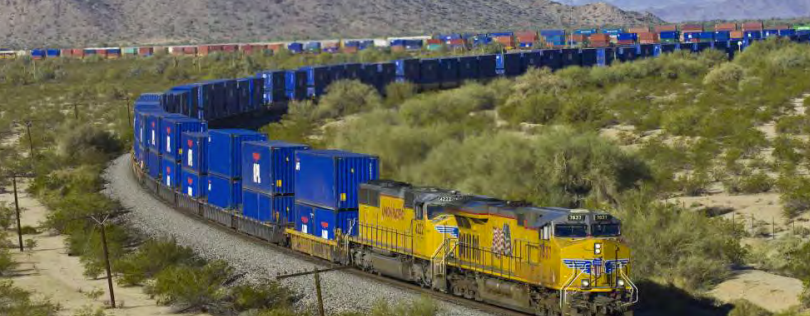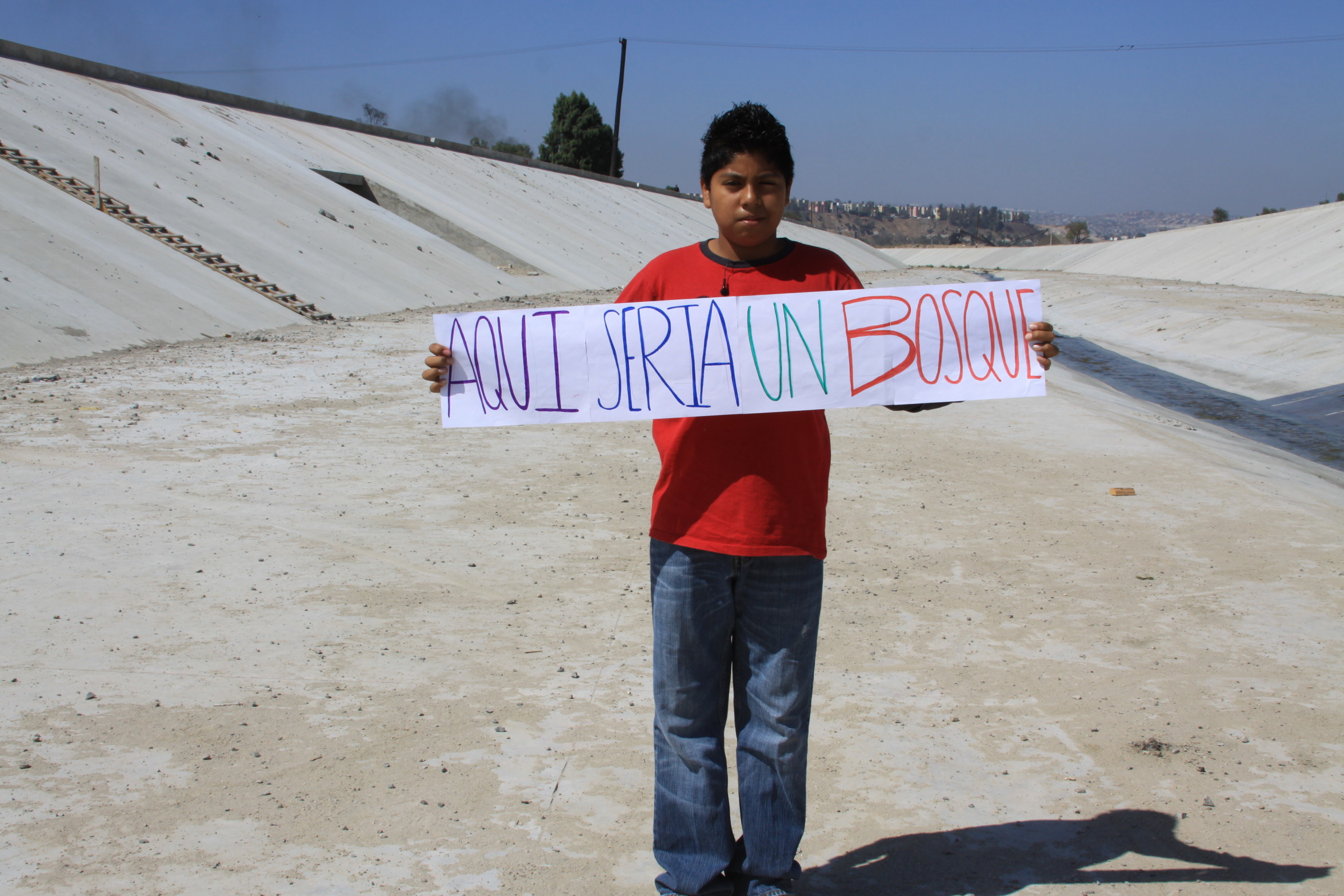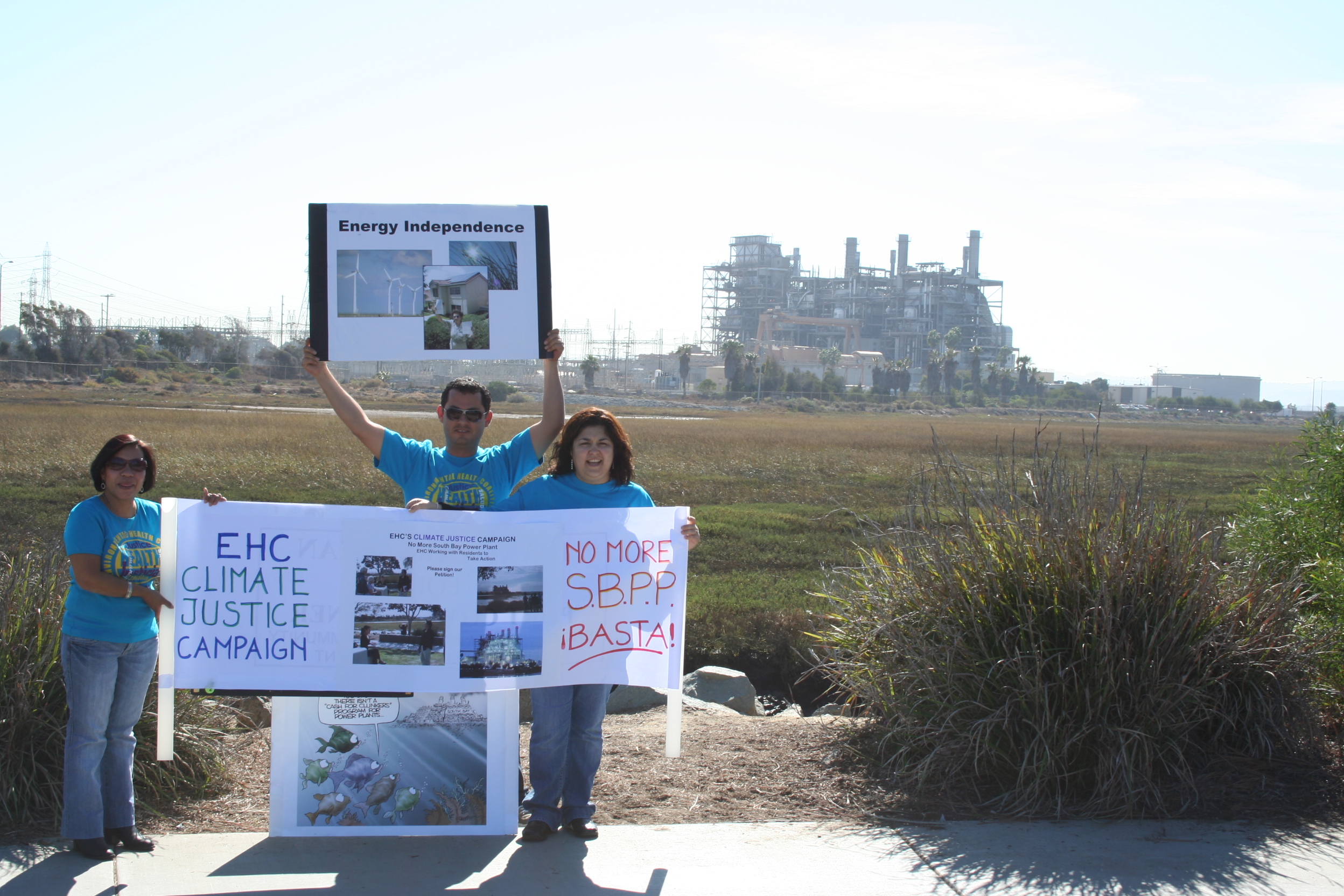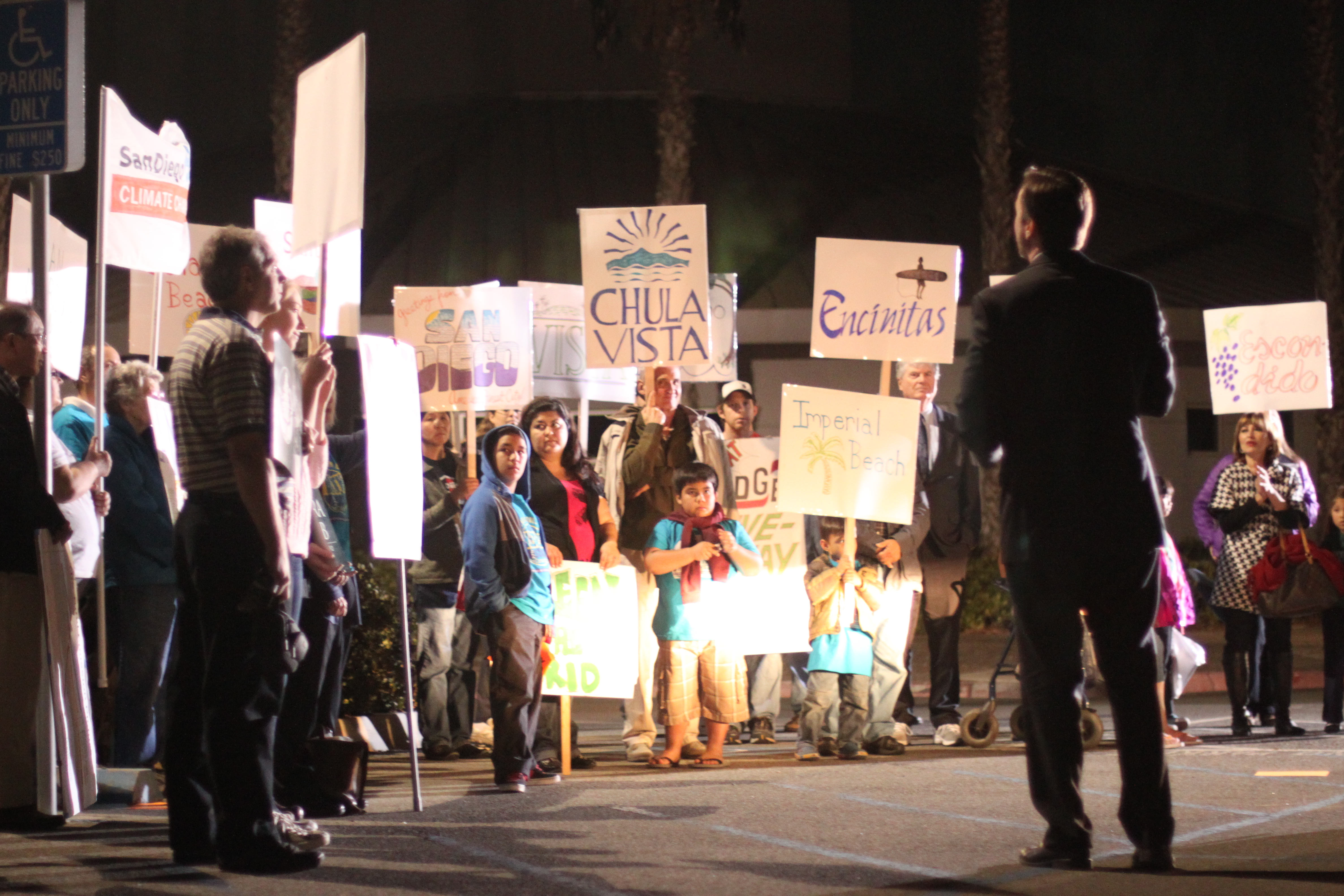As a kid growing up in the LA air basin during the smoggy 50s and 60s, I thought of irritated eyes and a sore chest as normal parts of life. The sky on hot summer afternoons was a brownish yellow shade, and the air sometimes made your eyes water. In my later childhood years, I came to view air pollution as a symbol of how radically alienated from nature Southern California life was; as I thought of it in apocalyptic, if poetic, terms, we had poisoned heaven. Later, in college, I learned to think in more analytical, and hopeful, ways -- smog could be analyzed, understood and to a large extent, controlled. The ochre-brown color came from nitrogen oxides; the lung-damaging substance was ozone. Particulates added a hazy quality. It wasn't an amorphous cloud of human failure hanging over our cities, it was a specific set of pollutants with knowable causes and controls. If you increased the fuel efficiency of cars and added on catalytic converters, the air quality got better. And the photochemical smog picture of SoCal actually has improved since the 60s.

While ozone levels have improved, California has seen a massive increase in diesel pollution from trucks, trains and ships. As the economy globalized and manufacturing jobs went to lower wage countries (another catastrophe that is not inevitable), goods are shipped here from all over the world, unloaded at California's ports and trucked or shipped by rail all over the US.
Unlike smog, diesel pollution is more concentrated near emission sources, such as ports, freeways and rail yards. These diesel hot spots, as we all know, tend to be located in poorer, people of color communities. The result? More frequent and severe asthma, earlier deaths from heart and lung diseases, more premature and low-birth-weight babies, and maybe more of a wide range of other disorders, including diabetes and autism. Not to mention the safety hazards of heavy duty trucks on narrow surface streets, and the lights, noise and vibrations of massive shipping and warehousing operations.
 A new report released this month by the California Cleaner Freight Coalition (of which EHC is a member) concludes that there are cleaner freight alternatives that go well beyond today's cleanest diesel and natural gas powered trucks to reduce air pollution and greenhouse gas emissions. For local and short haul trips, using electric transportation powered by a clean electricity grid provides the greatest overall reduction in pollutants, and can eliminate tailpipe emissions in communities where freight movement occurs. For regional trips, moving goods by train and ship can reduce emissions compared to today's cleanest diesel trucks, if the cleanest engine technologies are used. Read the executive summary here, or the full report here.
A new report released this month by the California Cleaner Freight Coalition (of which EHC is a member) concludes that there are cleaner freight alternatives that go well beyond today's cleanest diesel and natural gas powered trucks to reduce air pollution and greenhouse gas emissions. For local and short haul trips, using electric transportation powered by a clean electricity grid provides the greatest overall reduction in pollutants, and can eliminate tailpipe emissions in communities where freight movement occurs. For regional trips, moving goods by train and ship can reduce emissions compared to today's cleanest diesel trucks, if the cleanest engine technologies are used. Read the executive summary here, or the full report here.
So, it's time to move past the idea that diesel is inevitable and the best we can do is to put filters on the trucks. We can start moving now toward zero- or near-zero emission technologies. This is life saving technology, and there's no excuse for delay.
What else isn't inevitable? Readers who are waiting breathlessly for further information about my intellectual development will be relieved to learn that I don't think technology is the whole solution. Belatedly I stumbled onto the idea that things happen because people in power make decisions about them. Bad land use, outsourced jobs, freeways cut through historic communities, distribution centers sited next to schools, all of them in disadvantaged areas – none of these are unplanned, smog-like emanations from our culture. Specific people made specific decisions that led directly to these results. Sure, there is institutional inertia, timid regulators, lack of imagination, laziness and stupidity. But beyond all that, there are decision-makers. In truth, the most important pollution control device is a functioning democracy.
Joy Williams has been the research director for Environmental Health Coalition for nearly thirty years. Find out more about Joy and her work here.

 Después de dos años de campaña la coalición Alamar y la campaña Alamar Sustentable, hemos logrado integrar la Mesa Técnica del Arroyo Alamar, donde hemos encontrado propuestas interesantes para modificar el proyecto de concreto y buscar alternativas más sustentables. Sin embargo, aunque CONAGUA (Comisión Nacional de Agua, organismo encargado de la canalización) ha estado presente en algunas reuniones, todavía no se compromete formalmente a conservar el bosque ripario.
Después de dos años de campaña la coalición Alamar y la campaña Alamar Sustentable, hemos logrado integrar la Mesa Técnica del Arroyo Alamar, donde hemos encontrado propuestas interesantes para modificar el proyecto de concreto y buscar alternativas más sustentables. Sin embargo, aunque CONAGUA (Comisión Nacional de Agua, organismo encargado de la canalización) ha estado presente en algunas reuniones, todavía no se compromete formalmente a conservar el bosque ripario.




 A new report released this month by the California Cleaner Freight Coalition
A new report released this month by the California Cleaner Freight Coalition
 Yo ya estaba muy preocupada por los altos niveles de contaminación del aire – que ya están reconocidos como unos de los peores del estado – y los problemas de salud que la contaminación trae. Pio Pico causaría aún más contaminación – el equivalente de la emisiones de 170, 000 automóviles cada año para los próximos 25 años. Esa contaminación podría tener un impacto negativo a la salud de nuestros niños y acelerar el cambio climático. ¡Mis nietos ya tienen asma y yo no quiero que estén expuestos a aún más contaminación proveniente de una nueva planta de energía sucia!
Yo ya estaba muy preocupada por los altos niveles de contaminación del aire – que ya están reconocidos como unos de los peores del estado – y los problemas de salud que la contaminación trae. Pio Pico causaría aún más contaminación – el equivalente de la emisiones de 170, 000 automóviles cada año para los próximos 25 años. Esa contaminación podría tener un impacto negativo a la salud de nuestros niños y acelerar el cambio climático. ¡Mis nietos ya tienen asma y yo no quiero que estén expuestos a aún más contaminación proveniente de una nueva planta de energía sucia!